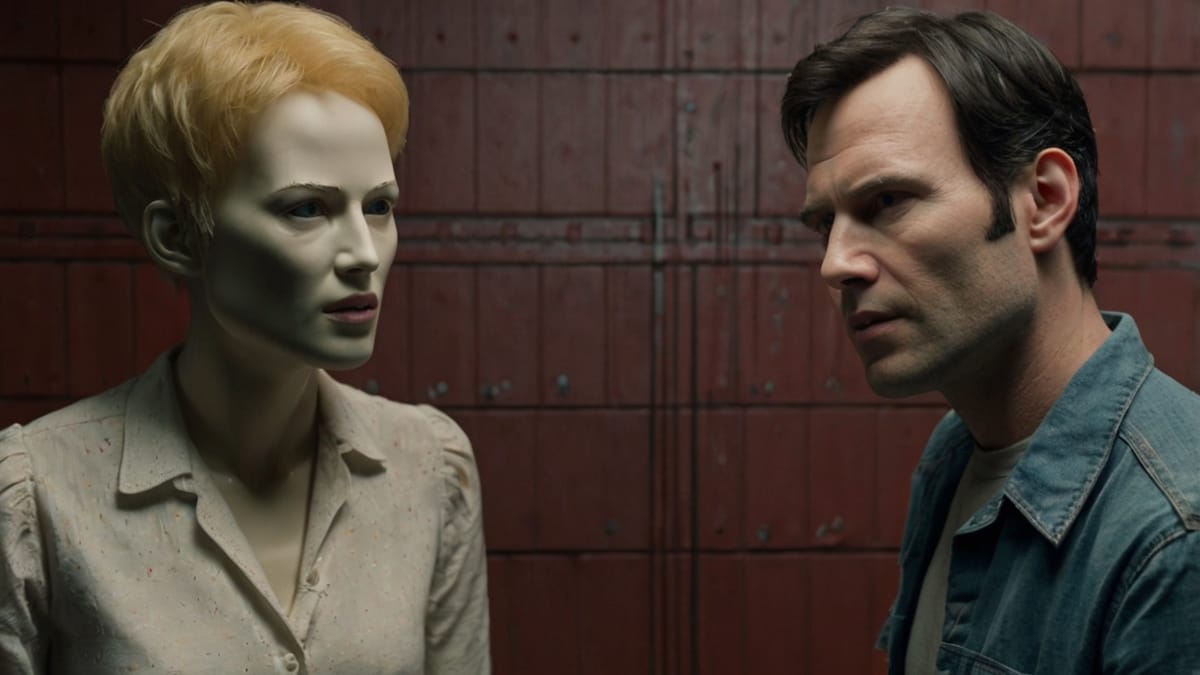Farewell to the Fright

Why the Uncanny Valley is Disappearing
That unsettling feeling when AI-generated humans look almost real but not quite? Get ready to say goodbye. The uncanny valley, a peculiar psychological hurdle in our interaction with AI, is rapidly becoming a relic of the past.
We've all experienced it: staring at a digital character that's so close to human, yet something is just... off. That subtle wrongness, the slight discomfort, is what we call the uncanny valley—the point where increasing realism suddenly turns unsettling before reaching full photorealism. But this valley is rapidly drying up, eroded by forces from both technology and human psychology.
The uncanny valley isn't going to disappear overnight in one grand technological leap. Instead, it's being eliminated from both ends: technology is becoming so sophisticated that flaws become imperceptible, while human perception is adapting to make those flaws irrelevant. Here's why this psychological phenomenon is on its way out.
The Technology Revolution
Exponential Leaps in Rendering and Realism are addressing the technical shortcomings that defined the valley. AI models are now mastering the intricate details of human appearance that previously triggered our discomfort. Subsurface scattering captures how light penetrates skin, giving it translucent, lifelike quality rather than a flat, plastic appearance. Advanced micro-expression generation creates the subtle, involuntary facial movements that convey genuine emotion. Realistic eye movement eliminates the eerie, fixed "AI stare" by replicating natural saccades—those slightly jerky yet deliberate eye movements. Even hair and fabric physics now accurately simulate how individual strands move and how clothing drapes and interacts with light.
Mastery of Lifelike Motion and Physics tackles another major contributor to the uncanny effect. Current AI video models train on vast datasets of real-world physics, human biomechanics, and motion capture data. This enables them to generate characters who move with authentic weight, balance, and the subtle imperfections that define human motion, eliminating the puppet-like stiffness that once made digital humans feel lifeless.
Holistic, Multimodal Generation represents the next evolutionary leap. Instead of separate models for image, voice, and motion, emerging AI systems generate video, synthesize speech, and animate facial expressions and body language in perfect synchronicity from a single prompt. This integrated approach eliminates the subtle disconnects between different aspects of human expression that currently contribute to uncanny sensations.
The Human Adaptation Factor
Cultural Acclimatization and Normalization may be the most profound shift of all. Just as we don't bat an eye at pitch-corrected vocals in popular music or extensive CGI in everyday television, we're simply getting used to AI-generated imagery. Exposure dulls the uncanny edge—the more we encounter digital faces and forms in media, advertising, and entertainment, the more our brains normalize them. What once felt "off" becomes simply "normal."
Generational Desensitization accelerates this process. Younger generations are growing up immersed in AI-filtered selfies, virtual influencers, and deepfakes. For them, digitally generated or altered human forms are a natural, often entertaining part of their digital world. Their visual literacy is evolving, meaning the "valley" simply won't register as strongly—or at all—for minds accustomed to fluid reality.
Functional Over Aesthetic
The Rise of Real-Time, Interactive Characters shifts our focus from passive observation to active engagement. The uncanny valley is most pronounced when we're simply watching. However, as AI characters become increasingly interactive—serving as virtual assistants, gaming NPCs, or companions—our engagement changes. When actively conversing or collaborating with an AI, our brains prioritize the interaction and purpose over minor visual imperfections. The cognitive load of meaningful interaction helps us naturally bridge the gap.
Functional Acceptance in Everyday Applications demonstrates how utility trumps aesthetic concerns. As AI-generated humans take on practical roles—virtual tutors, customer service agents, or educational avatars—their effectiveness matters more than perfect appearance. If a virtual tutor explains concepts clearly or an AI assistant solves problems efficiently, our brains prioritize the function and information delivered, much like we accept robotic GPS voices because they navigate us successfully.
Creative Evolution
The Embrace of Hyper-Stylization and AI-Native Art Styles offers an elegant sidestep around the valley entirely. Many creators are bypassing perfect photorealism in favor of unique, stylized aesthetics that are clearly not real yet emotionally compelling. Think of the distinct visual styles in Arcane, Into the Spider-Verse, or high-fidelity anime. These AI-native art styles are becoming accepted and celebrated as legitimate forms of digital artistry, making debates about photorealism less relevant for significant portions of AI-generated content.
The Learning Loop
Massive, Self-Improving Datasets and Feedback Loops enable continuous refinement. The models aren't just getting more data—they're getting smarter about using it. Advanced AI learns from both implicit and explicit human feedback, analyzing which generated humans resonate positively and which trigger discomfort. This rapid feedback loop allows AI to autonomously refine its understanding of "natural" and "appealing" human aesthetics, leading to constant iterative improvements.
The Emotional Bridge
Personalized AI Companionship leverages our fundamental human psychology. As AI tools enable increasingly personalized companions, tutors, and digital friends, we inevitably form emotional connections with these entities. Our capacity for empathy and attachment often causes us to overlook minor physical flaws in real relationships—the same psychological mechanism applies to AI. Emotional investment overrides aesthetic judgment, ultimately erasing the uncanny sensation.
The Future is Familiar
The convergence of these forces—technological advancement, psychological adaptation, functional utility, and emotional connection—is rapidly making the uncanny valley obsolete. Soon, distinguishing between human-generated and AI-generated faces will require more than instinct; it will demand forensic analysis, if it's even possible at all.
The future of AI-generated humans isn't uncanny—it's simply human, in all the ways that matter. We're not just building better technology; we're evolving alongside it, and that co-evolution is making the uncanny valley a fascinating footnote in the history of human-AI interaction rather than a permanent barrier to digital connection.
The valley is filling in from both sides, and soon, we'll walk across on level ground.